Last Wednesday was a bit of a historic moment. When I visited The New York Times website that morning, I was amazed to see that the featured story on the front page was implemented using interactive content. The story — How Many Times Has Your Personal Information Been Exposed to Hackers? — was produced as an interactive assessment tool, not merely a regular article that a reader would passively consume.
Just to make sure we’re in sync, “interactive content” is content where the audience actively participates instead of just passively reading, watching, or listening. Interative content includes things like quizzes, assessment tools, calculators, configurators, etc. (As a disclosure, I’m also the co-founder and CTO of ion interactive, a company that provides software to let marketers produce interactive content, which I’ve previously described as marketing apps.)
Now, The New York Times has published interactive content before — a number of interactive infographics, such as How Family Income Predicts Children’s College Chances, and several simple quizzes, such as a Did a Human or a Computer Write This? and political columnist Gail Collins’ satirical Fourth of July Quiz. But as far as I know, this was the first time they’d created an assessment with this much utility and featured it as the top story on their front page.
So what does this have to do with marketing and marketing technology?
Don’t worry, I’m not planning on becoming a media commentator. But there are clearly many parallels between publishers and marketers these days. Primarily, both are struggling in The Great Content Wars — how to grab people’s attention and engage them in some meaningful way, so as to build and maintain a monetizable brand, in a world of essentially infinite content.
To break through the deafening noise, ironically, each has been advised to act more like the other. Native advertising, for better and worse, is one product of that rendezvous.
While there are still fundamental differences between marketers and publishers — underlying business models being the most obvious and important — there is enough overlap in their shared mission to produce and distribute content effectively that there are opportunities to cross-pollinate ideas from one to the other.
Interactive content really started taking off with BuzzFeed’s Which State Do You Actually Belong In? quiz, which has garnered over 40 million page views — and high praise from Mary Meeker of KPCB for the way they’re “reimagining content.” Marketers took the cue of its popularity, and have started producing quizzes as a more regular part of their own content marketing and demand generation programs. For instance, this example of a lead generation quiz by Orbitz for Business.
But simple quizzes only go so far. Most of them have more of an amusing, entertainment bent and offer relatively limited utility to participants. Marketers who have taken Jay Baer’s concept of Youtility to heart have pushed to develop more valuable interactive content for prospects. Two good examples are Dell’s Mobility Assessment and the quiz (which is really an assessment) embedded in this Pearson interactive e-book.
These are not sugary, snackable content puffs for a quick laugh and a share. These are meaty assessment tools that require thoughtful user engagement and deliver in-depth consultative results. (I would also suggest that they are ideal vehicles for improving sales and marketing alignment — but as I’ve already disclosed, I’m biased on this subject.)
The New York Times assessment on their home page is a significant step in that direction in the world of publishers though. I can’t think of any other mainstream news publisher that has built something as sophisticated as this assessment as a way of telling a front-page story.
This is definitely not boilerplate interactive content.
Participants answer a series of questions about jobs they’ve applied for, online services they’ve signed up for, who their health insurance providers have been, and at which retailers they’ve used credit or debit cards:
As they do that, the assessment tool dynamically updates a tally of how many times different pieces of the participant’s personal information have been exposed to hackers:
You can see how this would be far more effective at getting people’s attention than just one more typical article about hacked data, of which we’ve seen so many. It makes the story come alive — and makes it very personal to each reader.
This is how many times your own data has been exposed.
Despite all the talk about “personalization” in content, most of the time that simply means dynamically selecting which articles to show someone. I would argue that this is a brilliant demonstration of a much more authentic kind of personalization.
(Maybe that should be my new motto: forget personalization; make it personal.)
At the end of the assessment, The New York Times gives you links to both the stories they’ve published on each individual hacking and, more importantly, links to the announcements from the companies that were hacked, which often include remediation options for those affected:
This front-page use of a custom-tailored assessment tool is a milestone in publishing — and I believe it’s a major step forward for mainstreaming the next generation of interactive content, above and beyond the ubiquitous “quiz” format.
It will escalate more “software thinking” in content marketing design — which is an opportunity for companies to differentiate themselves online and an opportunity for tech-savvy marketers and marketing technologists to demonstrate the relevance and power of their hybrid skillsets.
It’s one more step along in our journey from communications to experiences.
Final disclosure, I promise: the Orbitz, Dell, and Pearson examples cited above were built using my company’s software. However, there’s nothing about them that’s inherently tied to our platform. I simply chose them because, as customers, they were handy to reference from the forefront of my mind. The New York Times and BuzzFeed examples are not affiliated with my company in any way.
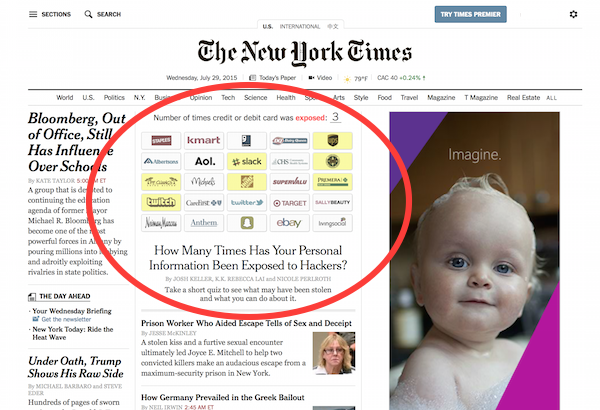
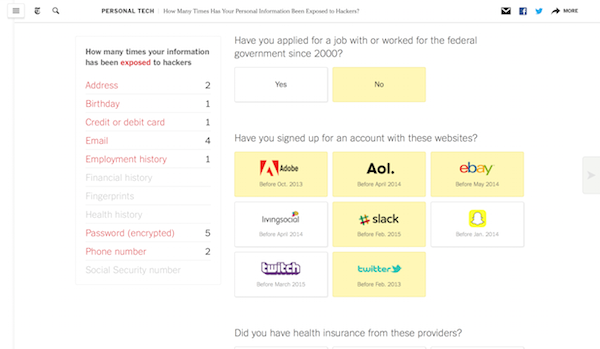
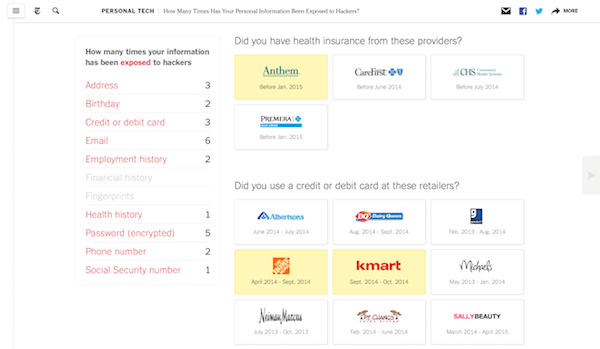
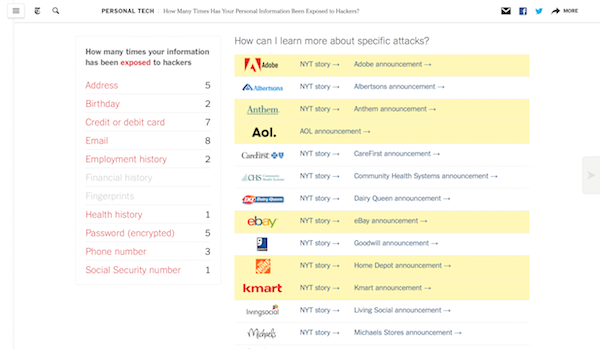

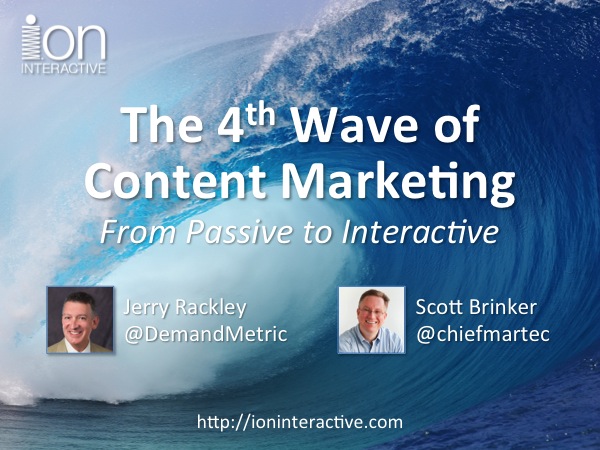
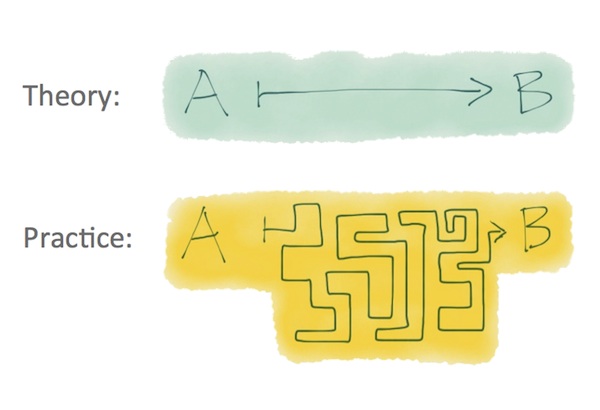
I’ve seen this a lot on other sites too (e.g. USAToday has an area within each article to dynamically capture people’s sentiment for its articles), and it’s great to see this level of interactivity increasing – I agree that this revolution is going to take shape in new and interesting ways especially when this approach and hyper personalization occurs (i.e. taking a particular user’s personal preferences and applying it to the lens/perspective of a story).
Certainly a milestone, but also another step in the curve as the adoption rate of Martec increases dramatically.
I would suggest the adoption rate is on a tipping point from arithmetic to geometric, with logarithmic not far away.
Moore’s law at work yet again.
Brilliant way for NYTimes to generate 1st party data too.
Great piece. Thanks Scott.
Thank you Scott for constantly sharing great insights. This interesting use of personalized interactive content seems to be feasible due to the explosion of data availability. It seems easier to leverage the availability of data for such tailor-made personal experience, as you pointed out the NYT article provides, than to provide a similar experience, say, in a piece that tries to leverage emotions for example. On the other hand, with more IoT and Quantified Self tech, integrated and connected, that would enable interactive content providers to leverage personal data-sources for a more unique personal experience.